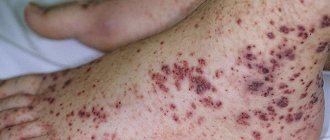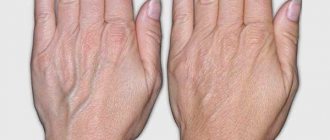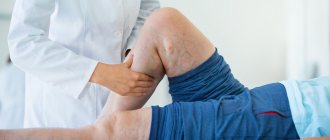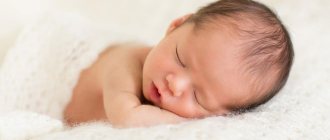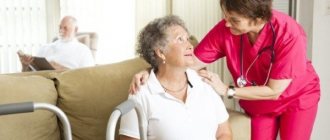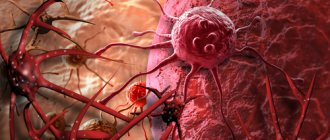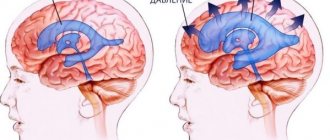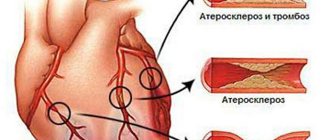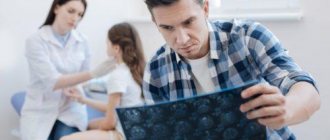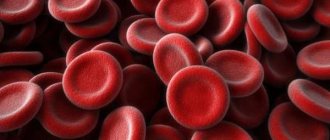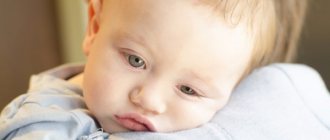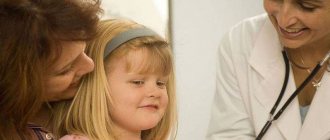Causes of childhood venous disease
If varicose veins in a child are a congenital defect, then the main cause may be a hereditary predisposition. Doctors also point out that the disease can occur due to the negative influence of certain factors on the body of a pregnant woman.
Such provoking phenomena during gestation include:
- Smoking and drinking alcoholic beverages.
- Poor nutrition.
- Lack of vitamins and microelements in a woman’s body.
- Transference of colds in the early stages of gestation.
- Unfavorable environmental conditions.
- Pathologies of the circulatory system in the expectant mother.
- Improper intrauterine development, which negatively affects the heart and blood vessels.
Also, varicose veins in children do not appear from birth, but six months after birth. The cause is improper or early physical activity on the body. This can happen if the baby is in an incorrect position while sleeping, or if the baby is not seated in a timely manner.
Treatment and prevention
In congenital forms of the disease, the only method of curing it is urgent surgical intervention . The older the child gets, the more fatal the pathology becomes.
By the beginning of puberty, it becomes so strong that only amputation of the limb can eliminate it. Therefore, it is necessary to take your child to the doctor when the first signs of varicose veins appear .
It would also be useful to carry out a special massage ; it will help alleviate symptoms and increase the effectiveness of medical therapy.
Treatment of adolescent forms, as a rule, does not require surgery .
The doctor can prescribe a course of medications to strengthen the circulatory system, select special clothing and shoes, and write a referral for procedures. Preventive measures include following a daily routine and diet, physical activity, wearing the right shoes and clothing, consuming essential vitamins and minerals, and avoiding unnecessary physical activity.
You should not allow your limbs to become numb for a long time. Infections in the body can accelerate the development of varicose veins, so you need to pay special attention to their timely and complete treatment to avoid complications in the venous system.
Types of disease
Doctors distinguish several types of varicose veins in children:
- Knippel-Trenaunay-Beber syndrome. Appears most often when parents abuse alcohol during conception and pregnancy. Because of this, pathological deviations occur in the development of the fetus. This type of disease is characterized by a high degree of pigmentation and problems with vein patency. The disease progresses as the child grows.
- Parkes Weber syndrome. It is also formed during intrauterine development. The course of the pathology is severe, since fistulas occur between the arteries and veins, spreading throughout the body. The main symptom of such varicose veins is swelling of the blood vessels. If you do not treat it, the child will become disabled.
- Phlebectasia. This type of varicose veins is characterized by foot deformity. The foot becomes larger in size. The patient feels pain when walking.
Symptoms of varicose veins in children
Enlarged veins in children should first alert parents. Given children's age, the child is not always able to correctly describe his own feelings in the early stages of the disease. Parents bear full responsibility for the child’s condition and health:
- Veins protrude strongly under the skin, the lower limbs increase in size. Immediately after birth, uncharacteristic spots form on the skin of the legs. Gradually (with growth) the veins in the child’s leg protrude more, and he experiences pain when walking.
- Vein pathology is accompanied by strong pulsation in the affected areas.
Pulsation of veins in the legs - Change in color of the skin of the leg.
- A network of prominent veins on the inner thigh or lower leg.
- Trophic ulcers.
Failure to promptly pay attention to early symptoms leads to disability.
Symptoms of the disease
Already at an early age, you can notice enlarged vessels on the legs of a small patient, which become smaller when pressed. There is also pulsation in the veins.
The skin over the affected parts of the limbs may rise slightly. As the child grows, the disease progresses. This is reflected in the length of the legs. The diseased limb grows faster because blood circulation increases in it. The vascular walls acquire a density similar to that of arteries.
By the age of 12, the child’s health deteriorates and his legs become too long. Patients are concerned about pain in the lower extremities, limited movement, the appearance of pigmentation on the skin, vascular network, and trophic ulcers.
Heart problems are also observed in adolescent patients. The child develops heart failure because there is a constant flow of blood from the arteries into the veins.
Method of conservative treatment
After the diagnosis has been established and its degree of activity, therapy is immediately started. In the early stages, wearing knitted compression garments is recommended. There are a lot of varieties of children's stockings, suitable for boys and girls, for every taste and color. They contribute to the distribution of pressure on the vessels throughout the entire lower limb with varying strength, which is explained by pathogenetic properties.
Don't forget about physical training. It is necessary to force the child to perform precise exercises to increase the strength of the lower leg muscles.
Latest information: Reviews of Filorosso compression tights
Vasodilators are the gold standard in the treatment of childhood varicose veins, or their other name is phlebotonics. The most common drugs:
- Detralex;
- Diosmin;
- Vasotek;
- Phlebodia;
- Juantal;
- Diosmin.
The lack of proper treatment is a direct indication for surgical interventions. Modern medicine includes many surgical techniques. Veins can be removed for varicose veins using either an invasive method or minimally invasive operations.
Among the invasive techniques, phlebectomy is the highest quality. This is the removal of veins for varicose veins by ligating and excision of vessels. There are about 10 types of it.
Varicose veins and sports
Varicose veins and sports go well together. Moreover, physical exercise helps to cope with this pathology. But when performing physical therapy, you should adhere to some rules:
- Monitor the moderation of loads; it is forbidden to overload the lower limbs.
- Gradually increase the load on your legs.
- Perform gymnastics smoothly, avoiding sudden movements.
- Do the exercises twice a day: morning and evening.
“Bicycle” and “scissors” are considered especially useful for varicose veins in children. Such exercises are performed in a lying position on your back with your legs raised up. With their help, blood vessels are unloaded, and the muscles of the limbs and abdomen are strengthened.
Doctors recommend that a child suffering from varicose veins take up swimming. This sport does not subject blood vessels to excessive stress. Cycling is also great. But it should be moderate, otherwise skating will worsen the problem with the veins.
If you have varicose veins, you will have to avoid heavy lifting, fast, long or obstacle runs, and sudden strength exercises.
Preventive actions
To prevent varicose veins in children, it is recommended that women during pregnancy give up bad habits and monitor their weight and nutrition.
Prevention of varicose veins in adolescence consists of leading an active lifestyle (physical exercise, swimming, daily walking and cycling), proper nutrition with a sufficient amount of vitamins.
Any circulatory disorders in children lead to severe pathologies such as heart failure. Lack of timely treatment can lead to disability of the child, which will significantly reduce the quality of life. Therefore, at the slightest manifestation of pathology, you need to contact a pediatrician.
Diagnostics
If suspicious signs appear that indicate the development of varicose veins in a child, you should urgently show the baby to a doctor. You can contact your pediatrician first. After the examination, he will send you for a consultation with a phlebologist who specializes in problems with blood vessels.
To determine the disease, the following methods are used:
- Doppler ultrasound. The examination helps to assess the patency of the vein valves and the general condition of the blood vessels. The patient is examined in a supine position, which allows obtaining reliable information.
- Ultrasound angioscanning. It helps to most thoroughly study the condition of the veins, namely to assess blood circulation, vascular patency and their lumen.
- X-ray contrast venography. This technique involves injecting a contrast agent into the patient’s vessels and taking several x-rays of the child’s affected limb.
Diagnosis of varicose veins in children
Diagnosis of varicose veins has made great strides forward; it is able to accurately determine the presence of the disease and prevent the disease.
- If you have symptoms or suspicions of varicose veins, you should consult a physician, surgeon or phlebologist for a preliminary examination.
- Ultrasound, duplex ultrasound examination of veins allows you to determine the presence of varicose veins and the condition preceding the disease. This diagnostic method helps prevent the development of varicose veins through various procedures and prevention.
- MRI, additional research methods, based on the individual picture of the disease.
During diagnosis, it is important to consult a professional doctor to avoid errors in diagnosis and subsequent treatment.
Treatment methods
For varicose veins in a child, surgical intervention is used. Medicines are not able to help in the treatment of this pathology. They are prescribed only to eliminate the symptoms of the disease.
Doctors believe that the optimal age for surgery is no more than 5 years. The older the baby, the less effective the surgical procedure is. If the child is already 12 years old, the operation does not give a positive result.
There are different types of surgical intervention. The most common methods used in medical practice for varicose veins are:
- Phlebectomy. During the procedure, the affected veins in the child’s legs are removed. The doctor cuts the skin over the dilated vessel, then inserts a special device, similar to a wire with a rounded end, and removes the damaged section of the vein. After this, the doctor applies stitches.
- Sclerotherapy. It involves removing the affected vessels that bulge using injections. To do this, a special substance is injected into the part of the vein that protrudes, which subsequently destroys it. After this, the sore spot disappears, and the vessel grows together on its own. Positive dynamics with this treatment of varicose veins are observed after just a few injections.
- Laser removal. This method of therapy is considered the safest; it does not cause pain during removal. After such an operation, the patient can walk on the same day. Removal is carried out using a high-temperature laser beam, under the influence of which the blood boils and the vein is “brewed”.
Treatment and prognosis
Which doctor should I contact? At the first signs of varicose veins of the lower extremities in a child in the first years of life, you should consult a pediatrician. If such a dire diagnosis is suspected, the pediatrician will recommend a consultation with a phlebologist.
And in this case, the earlier the diagnosis is made and treatment is started, the easier it is to stop the progression of the disease and avoid disability. Treatment of varicose veins is mainly surgical.
The most rational age for the operation is 3-5 years; in children over 12 years of age, the operation is problematic and will not give the desired effect. The most common are radiofrequency obliteration (price about 43,000 rubles), laser obliteration (price about 38,000 rubles), etc. In any case, the choice of treatment is individual. With timely treatment, the prognosis for children is favorable.
For varicose veins of the lower extremities, identified in school-age children, the effect in some cases can be achieved through lifestyle changes in combination with the use of venoprotectors and local vasoactive agents. As the disease progresses, surgical treatment methods are used.
Treatment with folk remedies in school-age children can give a good effect in the early stages of the disease. For this purpose, products are used for external and internal use.
Consequences of lack of therapy
The older a child suffering from varicose veins becomes, the more difficult it is to get rid of leg pathology. With age, the course of the disease worsens, the number of affected veins increases, and the symptoms become more painful.
It becomes difficult for the patient to move, and blood flow in the body is disrupted. Due to the dilation of the veins, the heart suffers, and children develop heart failure. It is almost impossible to cure the disease in a teenager.
The main danger of varicose veins is that if left untreated, the patient becomes disabled: the affected leg can be amputated.
Treatment
Treatment of congenital anomalies of vein development is carried out using surgical intervention. Drug therapy is rarely used and is mainly used to eliminate emerging symptoms. The condition worsens with age, which may lead to the need for limb amputation. Therefore, at the first manifestations of the disease, you should consult a doctor - a pediatrician or phlebologist.
Treatment of venous enlargement of the veins in adolescent children consists of adjusting the diet, using gels and ointments for external use, medications for oral administration, and prescribing gymnastic exercises.
Drug treatment
The main means for the treatment of vein pathology are “Heparin ointment”, “Lioton gel”, “Troxevasin” in the form of a gel. Venotonic agents are prescribed that improve the elasticity of the venous walls (“Phlebodia”).
To eliminate inflammatory processes and pain, non-steroidal anti-inflammatory drugs (Cardiomagnyl) are used. Antihistamines are used to relieve swelling.
IMPORTANT!
Only timely surgery can guarantee the child’s complete recovery. According to medical experts, the ideal age for surgical intervention is 3–6 years.
Surgery
The operation is prescribed for children with congenital varicose veins under 9 years of age. After 12 years of age, surgical treatment does not bring the desired effect.
During surgery, the deformed veins are completely removed, resulting in the complete restoration of normal blood circulation. The procedure for performing the operation is determined by the doctor depending on the severity and associated pathologies:
- sclerotherapy - drugs are injected into the area of the affected vein, gluing the venous walls and subsequently dissolving;
- laser treatment - with the help of rays, the walls of the affected veins are welded; the treatment is completely safe, leaves no scars, and possible complications are minimized; therefore, endovasal laser coagulation is used most often;
- surgical treatment - carried out using incisions in the skin through which dilated veins are extracted; It is rarely used due to the possibility of complications such as bleeding and infection.
Traditional methods
Traditional treatment is used in conjunction with the main therapy to reduce inflammation, swelling and pain. Horse chestnut tinctures and decoctions based on viburnum berries and currant branches are prepared for children. To increase the immune properties of the body, children are given cranberry juice and rosehip decoction. Compresses are also made from sour milk, Kalanchoe juice and wormwood.
Prevention
To prevent the occurrence of childhood varicose veins, parents should pay attention to the following preventive measures:
- Active lifestyle. It is necessary to instill in your child a love of sports from a young age.
- Prevention of flat feet, which in the future can provoke the development of varicose veins.
- Wearing comfortable shoes that fit the child's feet.
- Proper nutrition. The diet should be such that the body receives the required amount of vitamins and microelements every day.
Varicose veins in adolescents and young children are a dangerous venous pathology that must be dealt with promptly. For a child, timely treatment is especially important, since his body is still growing rapidly, and the absence of therapy can cause serious complications.
Disease in adolescents
Sometimes the classic form appears at the age of 10-15 years. The course of the disease is not so critical. Symptoms include:
- Limb cramps at night;
- Pain when walking any distance.
The causes of varicose veins in adolescents are often associated with problems in the spinal column, lack of normal physical activity and the use of uncomfortable shoes. In adolescence, hormonal changes are also an important factor, when an additional load is placed on the circulatory system. Colds also become an aggravating factor.
Clinical studies have shown that 50% of middle school-age children have varicose veins in various forms. In 70% of cases, the cause lies in a hereditary factor. 34% have valvular insufficiency of both superficial and deep veins.
Drug therapy
Treatment of varicose veins in children is carried out comprehensively, drugs for local and internal use are prescribed, exercise therapy, changes in lifestyle, nutrition, wearing compression underwear, taking angioprotectors, which are responsible for restoring blood patency.
Medications for varicose veins in children:
- Phlebodia Diosmin intramuscularly;
- Cardiomagnyl intravenously through a catheter;
- Antihistamines - Fenistil, Claritin, Loratadine drops;
- Heparin ointment;
- Lyoton;
- Troxevasin.
Apply medicinal ointments to infants in a thin layer, only to the affected area, to avoid side effects.
Important! Drug therapy for varicose veins in children is aimed at eliminating the symptoms of the disease, but for the patient to fully recover, surgery will be required, and the sooner it is done, the higher the chances of a complete cure.
One of the most effective, but expensive procedures is radiofrequency obliteration (at least 50 thousand rubles). Does not leave scars on the skin. Fast recovery after surgery.
Another type of gentle invasive removal of the vascular network by electrode soldering is microthermocoagulation. If there are contraindications to the methods described above, then plastic surgery is used to remove damaged veins - phlebectomy.
An important stage in the treatment of varicose veins in children is psychological preparation, because it is important to explain to the little patient why such procedures are carried out. Proper interaction between parents and doctors will help the child recover quickly.
If veins are visible on the legs, there is a high probability of developing varicose veins. The problem can be eliminated by using special medications. Their action is aimed at relieving associated symptoms and preventing complications.
Medications used for treatment are divided into several main groups:
- angioprotectors;
- anticoagulants;
- non-steroidal anti-inflammatory drugs.
